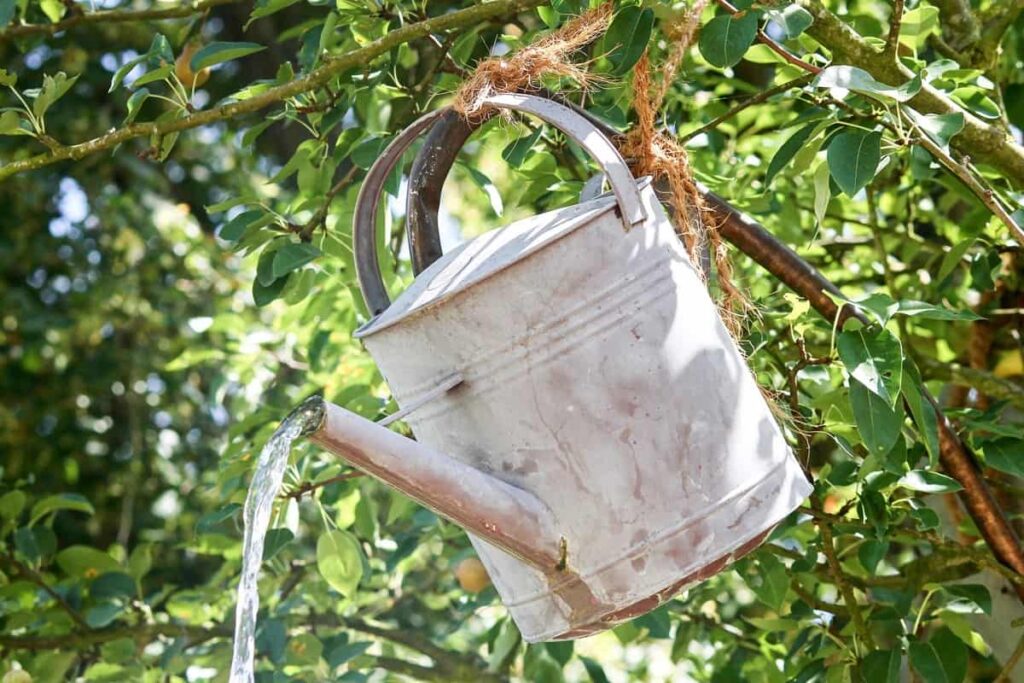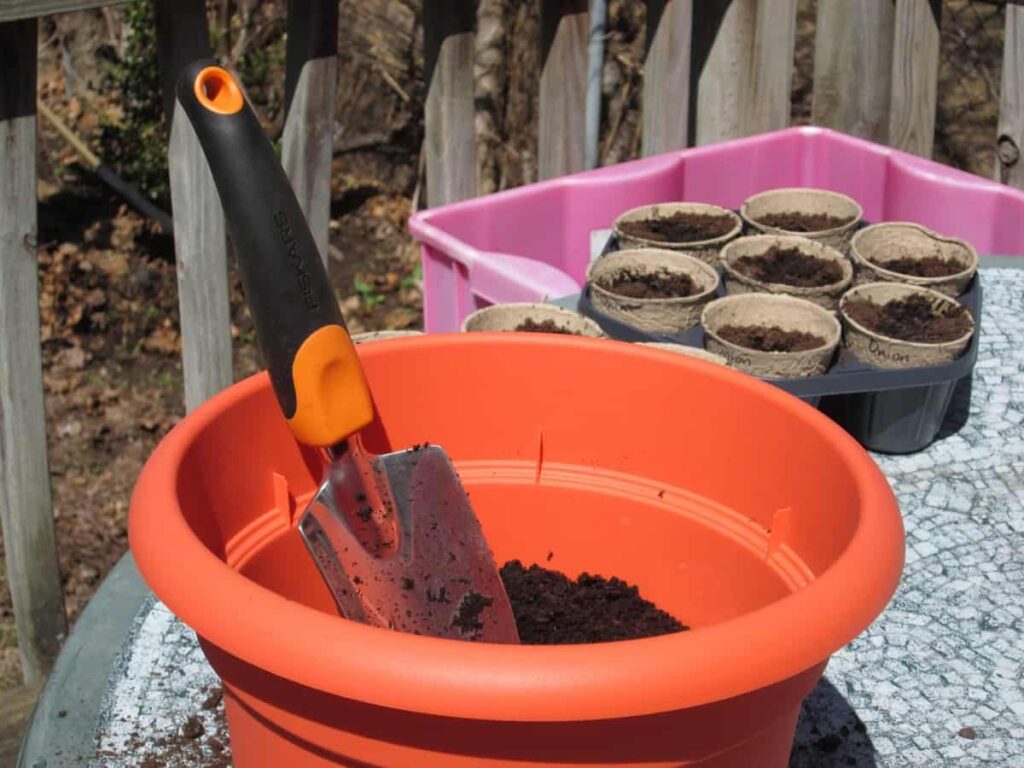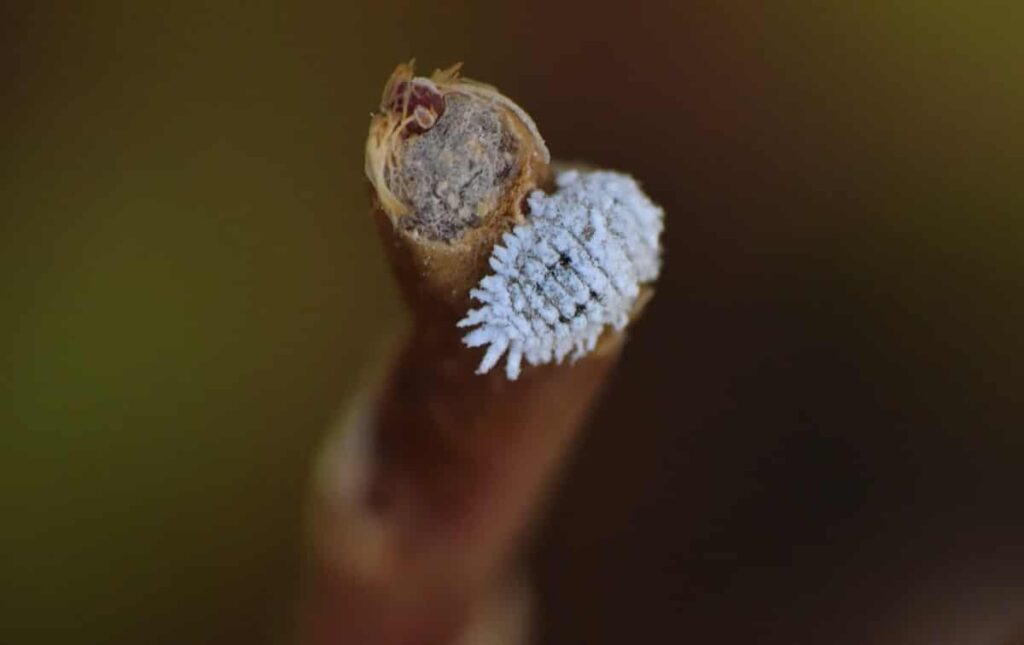The Turtle vine is a great trailing succulent ready to brighten your home. Taking care of these plants is easy if your home gets enough sun. Turtle vines are fast-growing perennial that grows up to 20 inches in length each year under ideal conditions. It spreads horizontally and vertically, looking attractive in both containers and hanging baskets when matured. It is a succulent with thick and small-sized plants with purple undersides.

It’s easy to grow Turtle vines both indoors and outdoors, and that’s what makes Turtle vines a valuable ornamental houseplant. You can have a beautiful Turtle vine plant with patience and the right circumstances. The Turtle vine is a versatile plant that can be grown under different conditions. You can easily grow this plant, and it can tolerate various temperatures and light levels. Turtle vines are an excellent choice for those looking for a low-care plant that will add beauty to the landscape.
How to grow Turtle vine plant
Types of Turtle vine
Pink Turtle vine
This low-growing succulent grows up to 4 to 6 inches and produces round, small, waxy leaves in various shades of green stripes, cream, and pink with burgundy bottom sides.
Green Turtle vine
The Green Turtle vine is the most popular variety of Turtle vine plants. It is easy to maintain and can thrive in different conditions. The Green Turtle vine is a fast-growing plant that can reach up to 6 feet in length. It has dark green leaves and purple flowers.
Red Turtle vine
The Red Turtle vine is a less common type of Turtle vine plant. It’s more challenging to maintain than green Turtle vine, but it’s still possible to grow it successfully. The Red Turtle vine is a slow-growing plant that can reach up to 4 feet in length. It has dark red leaves and yellow flowers.
Yellow Turtle vine
The Yellow Turtle vine is the least common type of Turtle vine plant. It isn’t easy to maintain and rarely grows more than 2 feet in length. Yellow Turtle vines have pale yellow leaves and white flowers.
Bianca
This popular variety has small, oval, glossy leaves that turn pink with time. It looks beautiful in small hanging baskets, especially with striped green and pink leaves.
Climate suitable for growing Turtle vine
The Turtle vine plant is succulent and prefers bright but indirect sunlight. So, always keep it in a sunny location. The best place to keep it is where it can get direct morning sunlight and then stay under the shade for the rest of the day. Turtle vine plants prefer bright but indirect light. Low light stops turtle vine plant growth, and excess direct light can cause leaf burn.
Some ideal locations include areas with south-facing or east-facing windows. The Turtle vine is a tropical plant that requires warm, humid conditions to thrive. It will not tolerate cold temperatures or extended periods of dryness. Turtle vines require full sun but can also grow better in partial shade. The soil should be rich and well-drained, and the plant should be watered regularly during the growing season.
In case you missed it: How to Grow Hollyhocks: A Guide to Propagation, Planting, and Care

Soil requirement for growing Turtle vine
Turtle vines like well-drained soil that also offers some organic food. Root rot can be avoided if the soil structure is correct. Remember to check the pH first. This plant will need a slightly acidic medium with a pH of 5 to 6. Soil requirements for Turtle vines are not particularly demanding.
The plant prefers well-drained soil, but it will tolerate many soil types, including sandy, clay, loamy, and even rocky soil. Turtle vines are not selective about the pH level of soil and will work well in both acidic and alkaline soils. However, the plant will perform best if the soil is kept on the moist side.
Water requirement for growing Turtle vine
If you give more water to this plant, it is more likely to have fatal root rot. So always remember to use a container with enough drainage holes to flush out excess water. Turtle vine plants like to be watered once the soil is dry. Giving too much water or keeping the soil soggy is not good, as excess moisture causes root rot. Make sure the roots never stay in the water. Turtle vine needs more water in the spring and summer when it grows faster. It needs less water during winter.
In case you missed it: Growing Morning Glory Flowers: How to Plant and Care

Container size for growing Turtle vine
Hanging baskets are also a great alternative, as trailing stems with thick leaves look attractive as they fall. To determine how large a container you’ll need for your Turtle vine, consider the size of the plant. A small plant will only need 2-to-3-gallon pots, while a larger plant may need 10 gallons. Once you have an idea of the size of your plant, choose a slightly larger pot to allow growth.
If the pot is too large, the roots will be filled with water, and the plant will suffocate. Turtle vines can be grown in plastic, clay, or metal pots. Plastic pots are lightweight and inexpensive, but they can be easily broken. The clay pot is heavier and more durable but can also be more expensive. Metal pots are the most durable option, but they can be very hot in direct sunlight.
In case you missed it: How to Grow Cardamom (Elaichi) from Seeds at Home: Soil, Germination, Planting, Pests, Diseases, and Care

Turtle vine propagation
You can easily grow the Turtle vine plant which can be propagated from seeds or cuttings. If you’re growing it from seeds, sow in late winter or early spring. If the soil is hot enough, it will germinate within two weeks. If you’re growing Turtle vine from cuttings, take stem cuttings in spring or early summer, and keep them in water until they root.
From the seed
It is easy to propagate Turtle vine plants from seeds. Sow the seeds in a pot or container filled with a damp, well-drained potting mix or seed-starting mixture. Place the pot or container in a warm, sunny place and keep the soil moist but not soggy. Turtle vine seeds will germinate in 10 to 14 days. Once the plants emerge, thin them so that only strong and healthy plants remain.
From cutting
To propagate the Turtle vine plant, take 3 to 6 inches long stem cuttings. You can take cuttings in spring or early summer. Cut just below a node. Make sure each cutting has at least two nodes. You should remove the lower leaves from each cutting, leaving the top 2 to 3 leaves, and dip each cutting end into a rooting hormone powder or gel. Next, fill a pot with a soil-less mixture and insert the cutting.
You should cover the pot with plastic wrap or a clear dome to create moisture well. Place the pot in indirect sunlight, and you can keep the soil moist but not soggy. After 4 to 6 weeks, you should see the roots growing from the cutting. At this point, you can remove plastic wrap and water as needed.
Transplanting Turtle vine seedlings
Once the roots are about an inch long, transplant the Turtle vine cutting into a pot or garden. Plant the cutting into well-draining loamy compost, so the leaves remain above ground level. The plant covered with a transparent plastic sheet will increase humidity and create greenhouse-like conditions during the first few weeks. Be sure to give the plant breathing room for a few hours on alternate days by removing the plastic bag. In 3 to 4 weeks, Turtle vines will be well established.
Turtle vine plant care
Pruning for Turtle vine
Pruning is necessary to cut back dead, decaying, and yellowing parts of the plant and redirect the plant’s energy to healthy new growth. Also, pruning keeps the plant contained and in the desired form. Ensure that the pruning shears or other tools are sharp and sterilized to prevent bacterial and fungal diseases. The pruning of Turtle vines is an important part of plant care. This fast-growing, bushy vine can become unruly if left unchecked. Pruning will help to promote new growth and keep the plant looking its best.
When pruning Turtle vines, it is essential to do so carefully. Make sure to cut at a 45-degree angle just above a leaf node. This will help encourage new growth. You should prune the Turtle vine in the spring or early summer. However, if necessary, you can also prune in late summer or early fall. Just be sure to prune early enough in the season, as this can damage new growth that has yet to have a chance to harden off for winter.
Fertilizer requirement for growing Turtle vine
Turtle vine plants also require a dose of supplements to grow big and stay healthy. For this, you should provide either vermicompost or liquid fertilizer to keep the Turtle vine plant growing. Luckily, Turtle vine isn’t a heavy feeder. Every 10 to 14 days during summer, you can apply liquid fertilizer. This is when the plant is very active in its growth.
In case you missed it: 20 Indoor Plants in India: Best List to Keep Your House Filled With Fresh Air

You can also use slow-release granules or pellets but follow the manufacturer’s recommendations on how much you should apply. During its growing season (spring through autumn), you should feed your Turtle vine plant once every month and stop feeding it in winter when the growth is slower. You should give regular doses of diluted liquid fertilizer during their growing season if you’re growing Turtle vines as houseplants.
Pests and diseases of Turtle vine and their control
Pests
Turtle vine pests include aphids, mealybugs, scale insects, whiteflies, and spider mites. These insects can cause stunted growth, leaf discoloration, and decreased flower production. In severe infections, vines can be killed entirely. Insecticidal soap or horticultural oil can be used as needed to control pests.
In case you missed it: Best Office Desk Plants in India: Increase Your Productivity With These Lucky Plants

Diseases
- Powdery mildew is a white or gray powdery fungus that can grow on Turtle vine leaves. This disease is caused by too much moisture and not enough air circulation. To prevent powdery mildew, ensure your Turtle vines are watered at the base of the plant. Also, ensure proper air circulation by pruning any dead or dying leaves.
- Root rot is another common Turtle vine disease. This disease is caused by too much moisture around the plant’s roots. Root rot symptoms include yellow leaves, wilting, and plant death. To avoid root rot, ensure to water your Turtle vine at the base of the plant and add a thin layer of mulch around the base.
- Leaf spot is another disease that can affect Turtle vines. The disease is caused by various fungi and results in small brown or black spots on the plant’s leaves. Leaf spots can also cause premature leaf drops. To prevent leaf spots, make sure to place your plants well so that they have proper air circulation. You should also remove any infected leaves from the plant as soon as possible.
Conclusion
The Turtle vine plant is an attractive, low-care option for any houseplant lover. With its lush green leaves and trailing vines, Turtle vine is sure to add a touch of beauty to any room. A Turtle vine plant may be a good option if you’re looking for fast-growing ground cover. These plants are beautiful, easy to care for, and have little maintenance. With a bit of love and attention, your Turtle vine will continue to grow and flourish for many years.
- The Role of Watering in Preventing Drying Moringa Pods
- Best Liquid Fertilizer for Flowering Plants
- How to Set Up an Efficient Watering System for Home Garden
- How to Mulch Tulip Bulbs: Expert Tips Best Tulip Blooms
- Common Problems with Potted Figs and How to Solve Them
- How to Prevent Flower Drops in Pomegranate Trees: Effective Tips
- How to Boost Ridge Gourd Flowering and Yield: A Beginner’s Guide
- Effective Pollination Techniques for Maximizing Gourds Yield
- Composting Techniques for Manure in Home Gardens
- A Step-by-Step Guide on Propagation Techniques for Jasmine Plants
- How Do I Make My Garden Less Cluttered: A Beginners Guide
- Growing Red Currants at Home for Beginners
- Gardening Techniques in Planting Vegetables
- Where to Place Indoor Plants in Your Home
- How to Grow Tomatoes Organically at Home: A Comprehensive Guide
- Organic Gardening on a Budget: Low-Cost Methods and Materials
- Gongura Seed Germination and Planting Methods
- Cabbage Seed Germination and Selection
- Broccoli Seed Germination and Selection
- Asparagus Seed Germination and Variety Selection
- Seasonal Flower Gardening: Best Practices for Spring, Summer, Fall, and Winter
- How to Grow Hibiscus from Flower
- Plantation Ideas for Home Decoration: A Beginners Guide
- Flower Garden Designs and Layouts for Beginners
- Planting and Spacing Techniques in Papaya: A Beginner’s Guide
- Growing Gold: Essential Techniques for Planting Pineapples
- How to Make Kalanchoe Plant Bushy: Home Remedies and Solutions
- 11 Reasons Why Your Gardenia is Not Blooming: Home Remedies and Solutions
- Eco Elegance: The Guide to Designing a Drought-Tolerant Landscape
- Gardening on a Slope: Strategies for Hillside Landscaping
- Nourish and Flourish: Top Organic Mulches for Thriving House Plants
- Everything You Want to Know about Indian Mogra Flower: Discover Uses and Growing
- Green Thumb Success: Expert Tips for Cultivating Greenhouse Pumpkins All Year Round
- Maximize Growth & Flavor: The Ultimate Guide to Companion Planting in Herb Gardens
- How to Control Rhododendron Problems Naturally: Home Remedies and Organic Ways to Fix Them
- Natural Magic: The Remarkable Benefits of Cinnamon for Plants